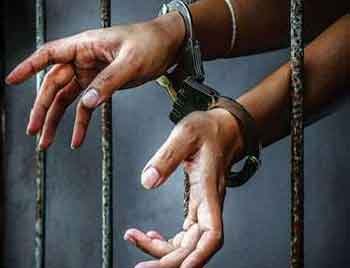New Delhi Railway Station Stampede: 17 Dead, Several Injured in a Tragic Incident
A devastating stampede at New Delhi Railway Station on Saturday night led to the loss of 17 lives, with several others critically injured. Chaos unfolded as the victims struggled to receive timely medical assistance due to a lack of ambulances and proper emergency response. This tragedy raises serious concerns about passenger safety, crowd control, and administrative preparedness at one of India’s busiest railway stations.
Chaotic Scenes at New Delhi Railway Station
Eyewitnesses described harrowing scenes at the station as panic spread rapidly. Injured passengers cried out for help, while their family members frantically searched for medical aid. However, no railway officials or security personnel were available to assist. Many injured passengers were forced to seek help from bystanders, with some being transported to hospitals using private vehicles, auto-rickshaws, or even on foot.
Despite the massive crowd influx at the station in recent days, especially due to the surge in travelers heading toward Prayagraj, authorities failed to implement proper security and crowd management measures. The complete absence of emergency medical assistance further worsened the situation.
Lack of Emergency Response and Medical Aid
One of the most shocking aspects of this tragedy was the absence of ambulances at the scene. Victims lay injured on the ground, while passengers and their families struggled to find help. Those who were fortunate enough to reach hospitals did so with significant delays, which may have contributed to the high fatality rate.
Even as the stampede unfolded, railway officials remained unaware of the situation, and no immediate rescue operations were launched. It was only after 17 deaths were confirmed at Lok Nayak Hospital that authorities sprang into action, deploying around 50 ambulances, NDRF teams, and additional police personnel. However, these measures came far too late to prevent the loss of lives.
What Led to the Stampede?
According to railway sources, the stampede occurred due to the sudden influx of passengers heading toward Prayagraj. Most trains bound for the city depart after 8 PM, resulting in overcrowding at platforms 12 to 16.
Over the past few days, the number of travelers at the station had steadily increased, yet no steps were taken to regulate the flow of passengers. Inadequate crowd management, coupled with the lack of police personnel, created an environment ripe for disaster. On Saturday, when the crowd grew uncontrollable, panic ensued, leading to a deadly stampede.
Administration’s Slow Response and Negligence
A glaring question remains—why were preventive measures not taken? The station authorities failed to anticipate the growing rush of passengers, even though similar crowd surges had been observed in the preceding days.
Furthermore, security arrangements at the station were shockingly inadequate. Ideally, such high-traffic platforms should have at least 30 to 40 police officers stationed per platform to manage crowds efficiently. However, at the time of the incident, only a handful of officers were present, rendering them helpless in controlling the situation.
The negligence did not end there. Even after the stampede, authorities failed to respond swiftly, allowing the situation to deteriorate further. While passengers were suffering life-threatening injuries, the administration remained oblivious to the unfolding tragedy. It was only after the death toll climbed that emergency measures were taken, raising serious concerns about official accountability and responsibility.
Why Was No Help Available for the Injured?
Another shocking revelation was the complete lack of immediate medical assistance. New Delhi Railway Station, being one of the busiest in the country, should ideally have multiple ambulances on standby, along with trained emergency response teams. However, at the time of the tragedy, only one ambulance was available—an alarming oversight that significantly delayed medical treatment for the injured.
This forced passengers to take matters into their own hands. Many carried their injured relatives on their backs, while others borrowed private vehicles to rush them to hospitals. The failure to provide prompt medical attention raises serious questions about railway safety measures and the government’s preparedness for handling such emergencies.
Authorities Wake Up Too Late
The administration’s delayed response remains a critical point of concern. Officials only acknowledged the disaster after reports emerged that 17 individuals had died at Lok Nayak Hospital.
Following this, 50 ambulances were dispatched, and rescue operations began in full force. However, by this time, many lives had already been lost.
The deployment of the National Disaster Response Force (NDRF), along with a large police contingent, was seen as an attempt to cover up the administration’s earlier failures. Had these measures been taken in advance, the tragedy could have been entirely prevented.
















